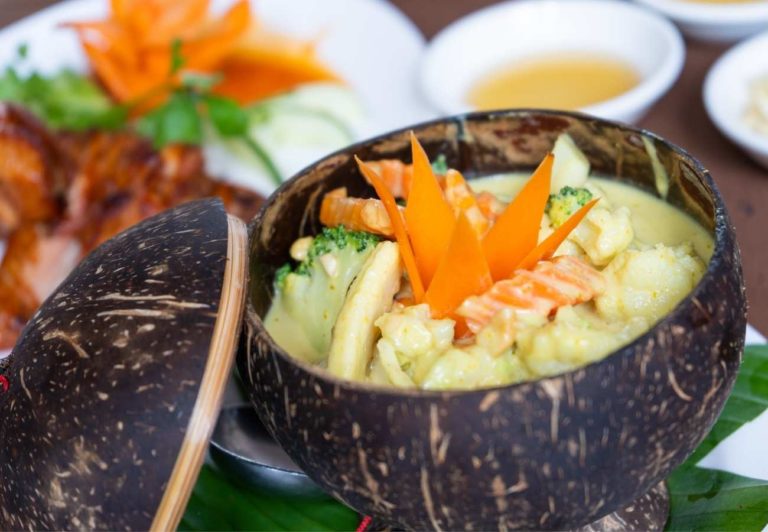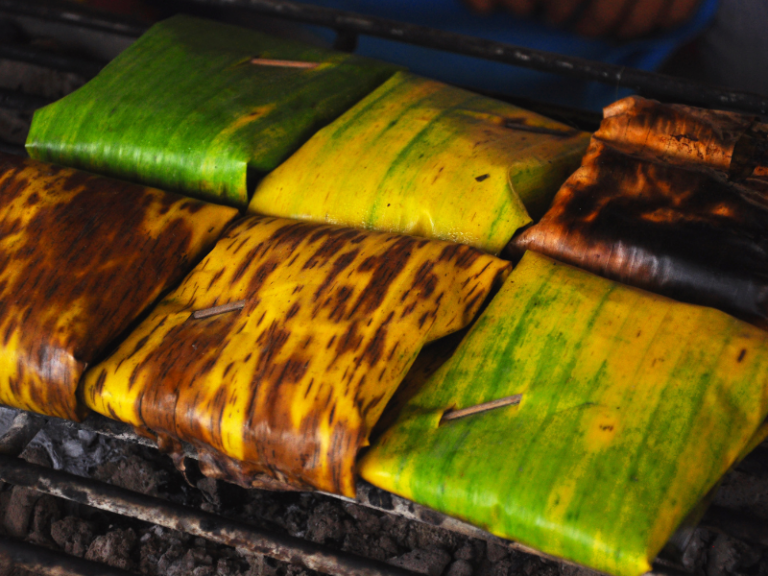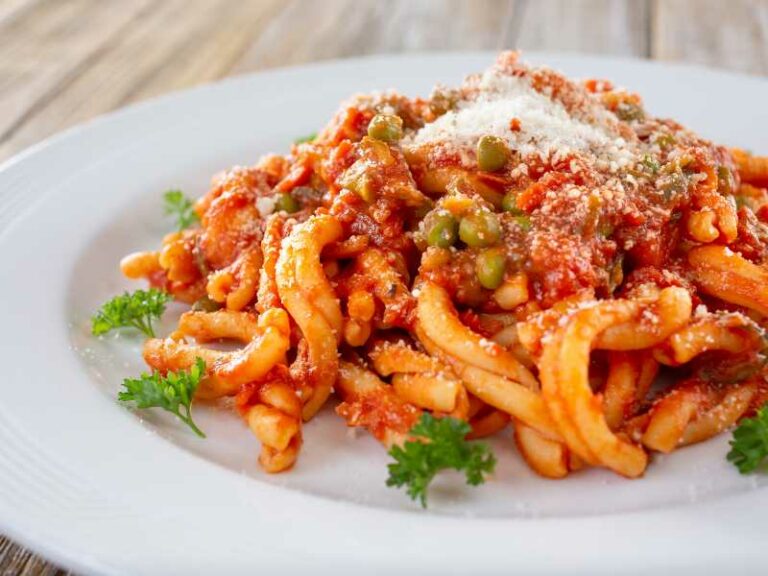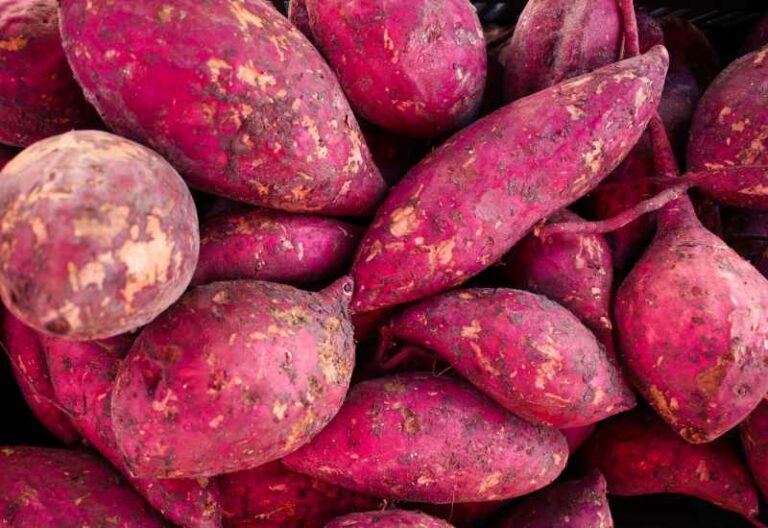Sierra Leonean Food: 7 Traditional Dishes of Sierra Leone
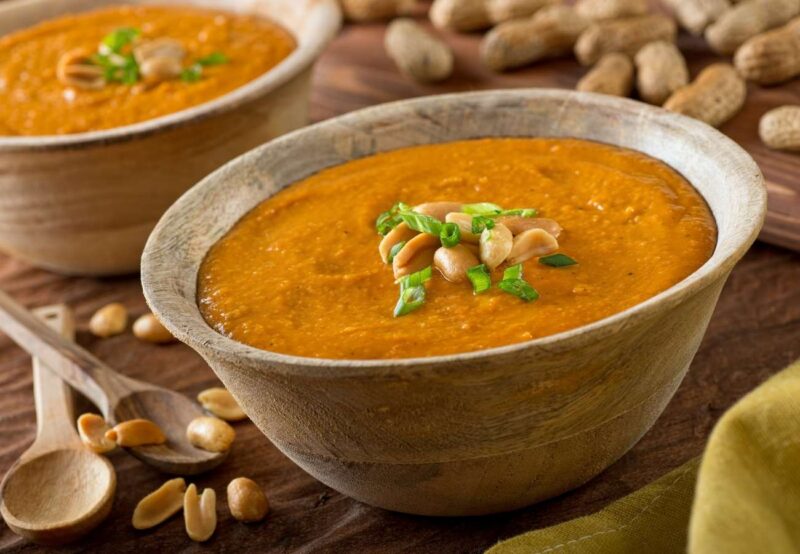
Sierra Leone is a country located on the west coast of Africa, bordered by Guinea to its North and East and Liberia to its South. It has a growing population of a little over 8 million people, which is made up of 16 ethnic groups or tribes. While each ethnic group has its own language, the official language spoken is English.
Sierra Leone has a tropical climate with a range of different landscapes including tropical rainforests, mangroves, savannahs and woodlands. The country is probably most known for its long and painful history of diamond mining.
Today, Sierra Leone produces crops like cassava, cashews, sugarcane, palm oil and rice which is a staple food. Some if its major exports are precious metals, gems, cocoa and coffee.
Sierra Leone’s cuisine consists mostly of the crops the country produces such as root vegetables like yams and cassava, leafy vegetables and hot peppers. Since it is produced in the country, palm oil is frequently used for cooking.
Dishes are usually stewed, in soup form or fried. Sierra Leoneans love rice and it is eaten almost every day. A popular saying is “If you haven’t had rice today, you haven’t eaten” and when asked “have you eaten?” if there was no rice in the food eaten so far that day, the response might be “no”.
Pemahun
Pemahun is a dish of steamed, sweet potato leaves, African eggplant, rice, palm oil, hot peppers and spices. This dish is often eaten as a breakfast food.
The African eggplant and rice are cooked first. Near the end of the cooking time, the sweet potato leaves and remaining ingredients are added and steamed to finish off cooking. The sweet potato leaves are added last because they cook quickly and over cooking will cause them to become too soft. Pemahun is often paired with fried fish.
African eggplant is also known as Jakato or garden eggs. True to its name, some African eggplants are small, white and egg shaped. It is used frequently in Sierra Leone cuisine.
Fufu
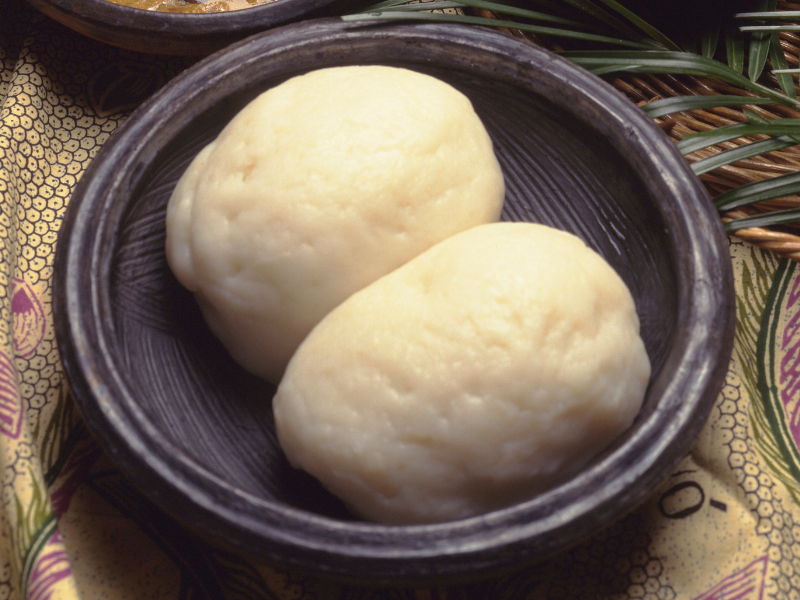
Fufu or foofoo, is a combination of ground up starch such as cassava, plantains or yam and hot water. The mixture forms a very soft, chewy dough. Fufu is popular all across Western and Central African countries.
Each country has a slight variation in how fufu is prepared. In Sierra Leone fufu is made using fermented cassava.
To make the fufu, cassava pieces are covered with water and left to ferment over several days. The water is then tossed and the pieces are finely ground, then cooked into the fufu dough. Due to the fermentation, the fufu has a slightly sour taste which usually compliments the dishes it accompanies.
Fufu is not eaten alone. The gelatinous dough mixture can be used in place of cutlery and with some fancy finger work is used to scoop up other parts of the meal, like the sauce. Others prefer to dip small balls of fufu into stew or soup before eating it.
Yebeh
Yebeh, also called ebeh is a rich carbohydrate stew. Any combination of starchy root vegetables is used such as cassava, potatoes, yam and plantains. The vegetables are boiled, adding other ingredients like seasonings, peppers, palm oil, chicken or fish at various stages. The root vegetables are allowed to overcook so that the broken-down starches can thicken the stew.
Groundnut Soup or Granat Soup
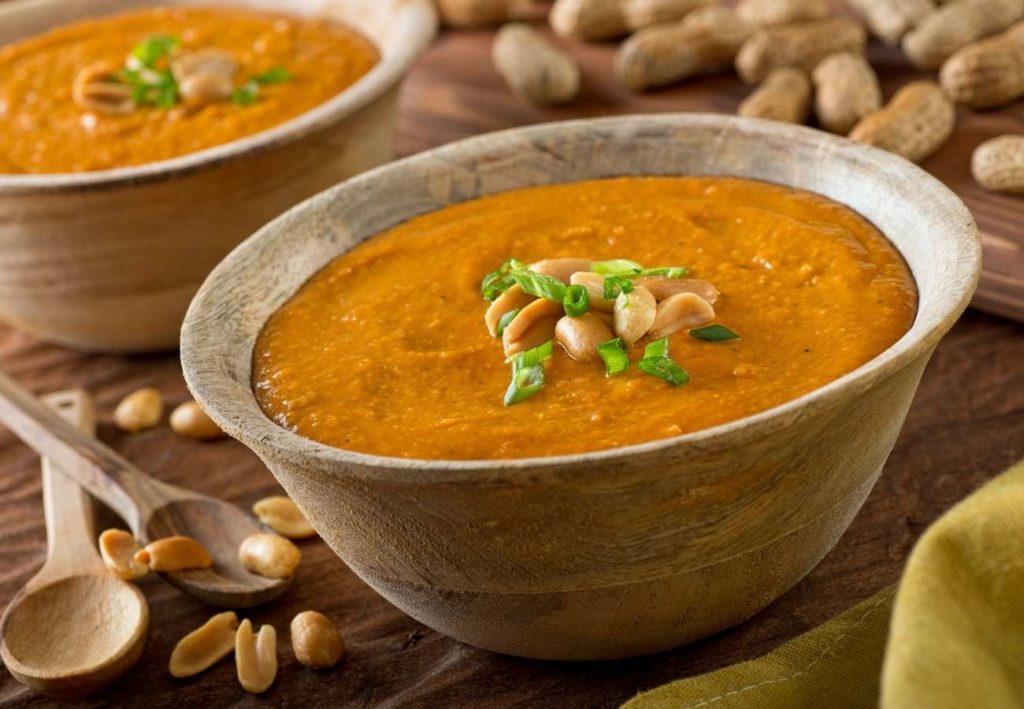
Groundnut soup is a dish of stewed of meat and vegetables slow cooked in peanut sauce. It is sometimes called peanut butter stew. The food called groundnut in Sierra Leone is actually peanuts. Freshly ground peanuts or peanut butter can be used. Store bought peanut butter is often unsweetened, so this dish is peanuty but not sweet.
Usually, meat like chicken is first browned in oil then removed from the pot. Other ingredients like potatoes and vegetables are cooked in peanut butter sauce. When the chicken is returned to the pot, the stew cooks until the meat is so tender it falls off the bone.
Groundnut soup is often eaten over rice or served with fufu.
Cassava Leaf Stew
Besides the cassava leaves, this stew is loaded with protein. In addition to meat like beef, the stew also contains fish, crayfish and peanut butter.
The salted meat is cooked first then removed from the pot leaving behind a flavorful broth. The broth is then used to cook the crayfish, fish, chopped up cassava leaves and other ingredients like peanut butter or ground nut, hot peppers and palm oil. The meat is added back into the pot and cooked some more.
Cassava leaf stew is served with rice.
Lafidi
Lafidi is a thick fish sauce made from pounded vegetables and fish. Sierra Leone cuisine wouldn’t be complete without seafood. This makes perfect sense since the Atlantic Ocean borders the countries entire West coast.
Lafidi is considered a quick and simple accompaniment to other foods, usually rice. When plain rice is put to the boil, peppers, eggplant and okra are also placed in the pot and cooked on the top layer of the boiling water. Sometimes, the vegetables are placed into a plastic bag first then placed over the cooking rice which steams them. The cooked vegetables are then pounded or blended into a pulp.
Some variations of Lafidi also pound pieces of fish into the vegetable pulp. This pulp is referred to as the sauce. It is served over white rice and drizzled with palm oil. Another variation of this dish serves the pounded fish and vegetable pulp separately over the rice with the palm oil drizzle.
Fish Balls
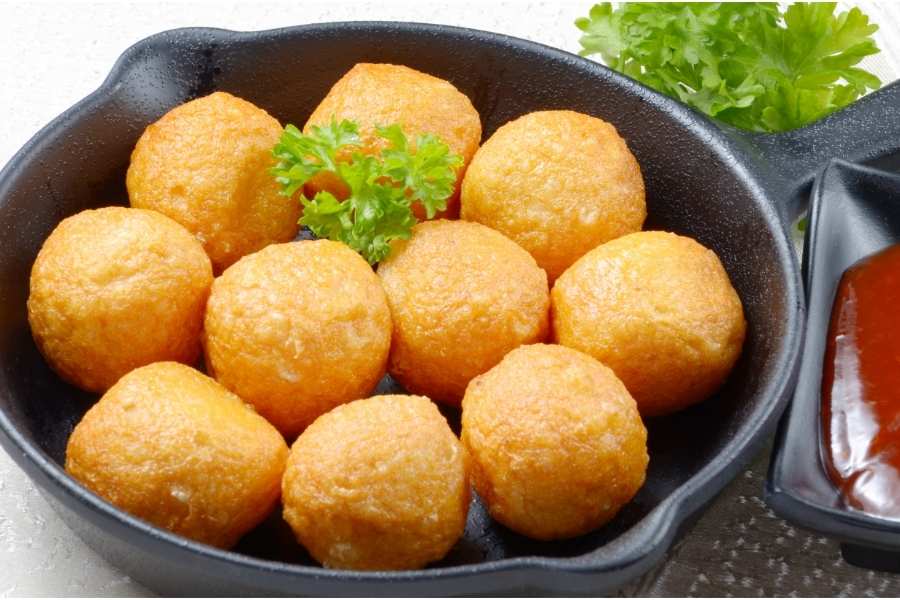
Fish balls are a mixture of fine boneless fish and seasonings like cilantro, onion, garlic, potatoes and peppers. The mixture is rolled into balls then fried. The type of fish and seasonings used are based on the fish available and personal taste.
Fish balls are considered a snack food and are popular at parties or sold as street food. This portable snack is eaten in a variety of ways including with a sauce, rice and sometimes even as a topping for stew.



